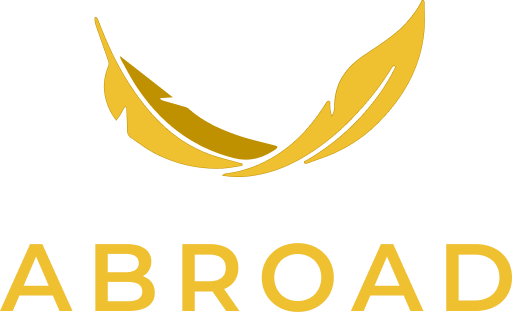8 Employee Coaching Examples You Must Know To Develop Agile Teams
The ability to adapt and stay agile is crucial for teams and organizations alike in today's rapidly evolving work environment. One of the most effective ways to cultivate agility within teams is through targeted employee coaching. Coaching helps to develop skills, improve performance, and foster a culture of continuous improvement. Here are eight employee coaching examples that can help you develop agile teams.
1. Goal Setting and Achievement Coaching
One of the most fundamental coaching scenarios for managers involves helping employees set and achieve their goals. This type of coaching is essential for creating a sense of direction and purpose within the team. For example, a manager might work with an employee to set specific, measurable, achievable, relevant, and time-bound (SMART) goals.
During these sessions, the manager and employee can discuss the employee’s career aspirations, identify relevant goals, and develop a plan to achieve them. Regular check-ins help to track progress and make adjustments as needed. This approach not only helps employees stay focused and motivated but also aligns their individual goals with the team’s objectives.
2. Performance Improvement Coaching
Performance coaching is crucial for addressing gaps in an employee’s performance and helping them reach their full potential. This type of coaching often involves identifying specific areas where an employee can improve, providing constructive feedback, and developing a plan for enhancement.
For instance, if an employee is struggling with time management, the manager can work with them to identify the root cause of the issue, such as procrastination or lack of prioritization. Together, they can create a strategy to improve, which might include techniques like time-blocking, setting deadlines, and regular progress reviews. This performance coaching example helps employees develop essential skills and improves overall team productivity.
3. Skill Development Coaching
As the workplace continues to evolve, so too must the skills of your team. Skill development coaching focuses on helping employees acquire new skills or enhance existing ones to keep pace with changing job requirements.
A practical example could be coaching an employee on new software that the company has implemented. The manager can provide training sessions, resources, and hands-on practice opportunities. Additionally, pairing the employee with a more experienced colleague for mentorship can reinforce learning. This type of coaching ensures that employees remain competitive and competent in their roles.
4. Conflict Resolution Coaching
Conflict is inevitable in any team setting, but how it is managed can significantly impact team dynamics and performance. Conflict resolution coaching helps employees navigate disagreements and foster a collaborative environment.
In a coaching scenario, a manager might work with two team members who have had a disagreement. The manager would facilitate a conversation to help each party understand the other’s perspective, identify the underlying issues, and collaboratively develop a solution. This coaching not only resolves the immediate conflict but also equips employees with skills to handle future disagreements constructively.
5. Adaptability Coaching
Agility requires the ability to adapt to new situations and challenges swiftly. Adaptability coaching helps employees develop resilience and flexibility in the face of change.
For example, if a team is undergoing a significant shift in project direction, the manager can coach team members on how to manage the transition. This might include discussing strategies for coping with change, encouraging a positive mindset, and offering support throughout the adjustment period. By fostering adaptability, managers help their teams remain agile and responsive to evolving business needs.
Also Read: Enhance Your Adaptability Skills in the Workplace
6. Leadership Development Coaching
Developing future leaders within your team is vital for long-term success. Leadership development coaching focuses on enhancing the leadership capabilities of employees who have the potential to take on greater responsibilities.
A typical scenario could involve coaching a high-potential employee on leadership skills such as decision-making, delegation, and team motivation. The manager can provide opportunities for the employee to lead small projects, offer feedback on their leadership style, and discuss strategies for effective team management. This coaching helps build a pipeline of capable leaders ready to step up when needed.
Also Read: Benefits of Holistic Leadership Development Through Executive Coaching
7. Career Development Coaching
Employees are more likely to remain engaged and committed when they see a clear path for growth within the organization. Career development coaching helps employees plan and progress in their careers, aligning their personal aspirations with organizational goals.
For instance, during career development coaching, a manager might explore an employee’s long-term career goals, identify the skills and experiences needed to achieve those goals, and create a development plan. This might include suggesting relevant training programs, identifying potential mentors, and setting milestones to track progress. This approach not only supports individual growth but also contributes to the organization’s talent retention efforts.
8. Creativity and Innovation Coaching
In an agile workplace, creativity and innovation are critical for staying ahead of the curve. Coaching for creativity encourages employees to think outside the box and develop innovative solutions to challenges.
A practical coaching scenario might involve a manager encouraging brainstorming sessions to generate new ideas for a project. The manager can facilitate discussions that inspire creative thinking, provide constructive feedback on ideas, and support the implementation of innovative solutions. By fostering a culture of creativity, managers can help their teams stay agile and forward-thinking.
Also Read: Knowledge vs Wisdom: The Vital Role of Experiential Learning in Nurturing Wisdom
To Conclude
Developing agile teams requires a strategic approach to employee coaching. By implementing these eight coaching examples—goal setting and achievement, performance improvement, skill development, conflict resolution, adaptability, leadership development, career development, and creativity and innovation—managers can enhance their teams’ agility and performance.
Each of these coaching scenarios in the workplace addresses different aspects of employee development, ensuring a holistic approach to building a resilient, adaptable, and high-performing team. As managers invest in coaching, they not only support their employees’ growth but also drive the overall success and agility of their organization.

